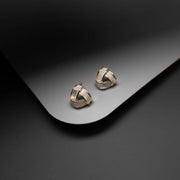What Is Turquoise?
Turquoise is an opaque, hydrous phosphate mineral (CuAl₆(PO₄)₄(OH)₈·4H₂O) prized for its vibrant blue-to-green hues, formed through the percolation of copper-rich groundwater in arid regions. With a Mohs hardness of 5–6, it’s softer than quartz but durable enough for jewelry when stabilized.
Key Geological Characteristics
-
Composition: Copper (creates blue), aluminum (green tones), and iron (yellow/brown matrix).
-
Texture: Waxy to matte luster; often veined with "matrix" (host rock fragments).
-
Sources: Iran (classic "Persian blue"), USA (Southwest), Egypt (Sinai), China, Mexico.

Turquoise Color: Why Does It Vary?
Turquoise’s color spectrum depends on its mineral content and formation environment:
| Color Type | Cause | Rarity & Value |
|---|---|---|
| Robin’s Egg Blue | High copper, low iron (e.g., Persian turquoise). | Most valuable; no matrix = premium. |
| Apple Green | Iron replaces some copper (e.g., Chinese turquoise). | Popular in Southwestern jewelry. |
| Teal | Balanced copper/iron (e.g., Nevada turquoise). | Mid-range pricing. |
| Webbed Matrix | Black/brown host rock veins (e.g., Kingman turquoise). | Adds artistic appeal; value depends on pattern. |
Note: "Sleeping Beauty turquoise" (Arizona) is famed for its pure, matrix-free sky-blue hue.

Turquoise Meaning & Historical Significance
Ancient Civilizations
-
Egyptians (6000 BCE): Mined in Sinai for amulets like the "Pectoral of Tutankhamun."
-
Persians: Believed it warded off the evil eye; adorned daggers and turbans.
-
Native Americans: Considered it "sky stone" (Apache, Navajo) for protection and rain-making.
Symbolism
-
Protection: Guards against negative energy (traditionally given to travelers).
-
Wisdom: Enhances communication and spiritual attunement (linked to throat chakra).
-
Healing: Medieval Europeans used it to detect poison (would crack or fade).
Turquoise Jewelry: Styles & Buying Guide
Popular Designs
-
Southwestern Silverwork: Navajo squash blossom necklaces, Zuni inlay rings.
-
Tibetan Bead Bracelets: Paired with coral and silver for spiritual harmony.
-
Modern Cabochons: Polished domes in minimalist pendants or earrings.
Authenticity Check
-
Color Consistency: Natural turquoise has uneven coloring (dyed imitations are uniformly bright).
-
Matrix Patterns: Real matrix appears organic (fake: painted-on or symmetrical).
-
Hardness Test: Scratches with a knife (5–6 Mohs) – plastic/resin fakes won’t.
Tip: "Stabilized turquoise" (resin-treated) is common for durability but lowers value vs. natural stone.

Metaphysical Properties & Uses
1. Emotional Balance
-
Calms anxiety and promotes emotional honesty (ideal for public speakers).
-
Releases old grudges when placed over the heart chakra.
2. Physical Healing
-
Traditionally supports immune function and detoxification (copper content).
-
Alleviates throat/thyroid issues when worn as a necklace.
3. Spiritual Protection
-
Used in house blessings (placed near doorways) to repel negativity.
-
Meditate with turquoise to enhance intuition and dream recall.
Caring for Turquoise
-
Cleaning: Wipe with a damp cloth; avoid chemicals (perfume, bleach).
-
Storage: Keep away from harder gems to prevent scratches.
-
Recharging: Place on selenite or in moonlight (avoid prolonged sun exposure).
Why Turquoise Remains Timeless
From Pharaohs to fashion runways, turquoise bridges earthly beauty and spiritual power. Its color shifts like desert skies, while its legacy as a talisman of truth and courage endures.
"Turquoise doesn’t just adorn the body – it speaks for the soul."
Explore our Turquoise Collection for handcrafted, ethically sourced pieces.








